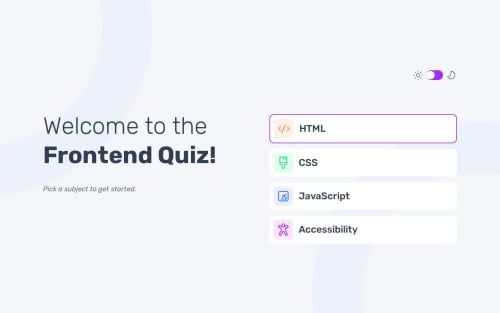Frontend Quiz App using Less for Css and Vanilla Javascript

Solution retrospective
Somehow it was pretty tough for me to write it in vanilla js. I had to rewrite the js code thrice. The desire to leave it like this was strong but I kept it up. So not bad. Also this time work on Less and CSS and HTML went really smooth. And there is clear stable workflow for me now
What challenges did you encounter, and how did you overcome them?I got so weird bugs in the process that couldn't find even theoretical explanation for them. For example when code reads the same data from an array, read 4 entries, but then for some reason cut them to 2. Inspite that while looping they still were 4. But I think I took many outcomes from this challenge. First of all, how frameworks ease us lives :-D. Second, if you don't have tools like redux and context, build code in the way that you needn't to pass data through many functions. Otherwise you'll get a lot of unexpected bugs. Clean eventListeners, otherwise it is a real pain, multiple calling events when you don't need it, memory leaks and so on. Keep functions independent as much as possible and don't forget about closures. Otherwise, you get unexpected results again. I know all that are known mistakes and reasons for existing best practices but somehow flew through fingers when writing in vanilla js.
Please log in to post a comment
Log in with GitHubCommunity feedback
- P@welpmoz
Your project looks great on both mobile and desktop devices, but it could use some improvement on tablets. The flow of the questionnaire is good; however, I noticed that when an option is incorrect, only the incorrect option is shown. It would be helpful to also display the correct answer in such cases as in the design. Additionally, be mindful of the border property. For example, if an element has a height of 10px and you increase the border to 2px (while hovering), it might cause unexpected behavior in the interface. Instead, you could set the height to 8px with a 2px border matching the background color, and on hover, simply change the border color.
Join our Discord community
Join thousands of Frontend Mentor community members taking the challenges, sharing resources, helping each other, and chatting about all things front-end!
Join our Discord